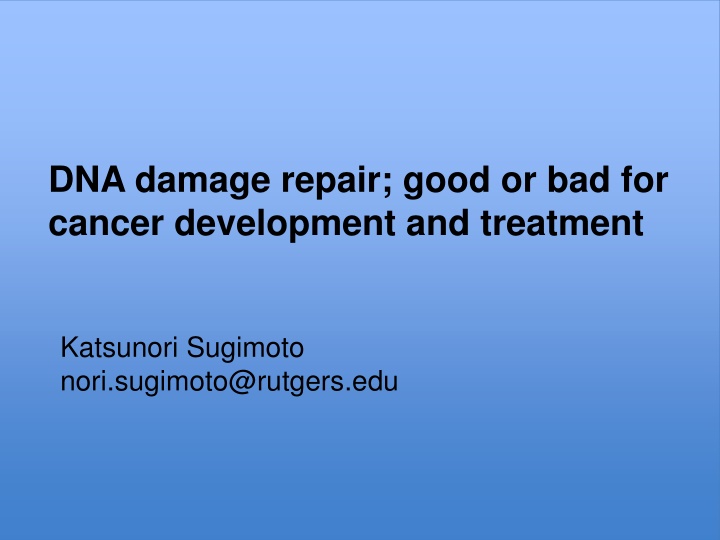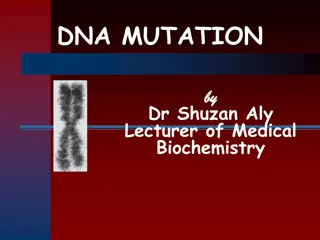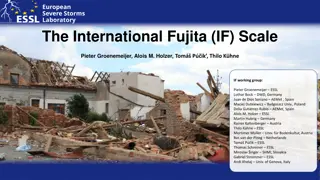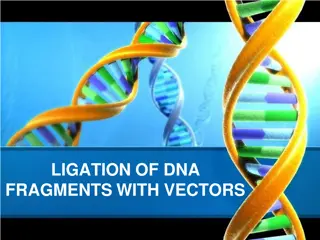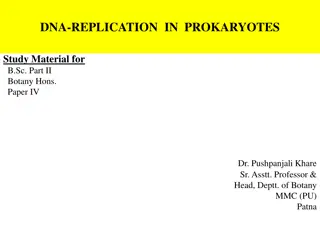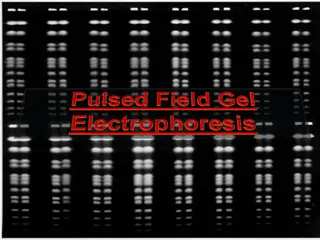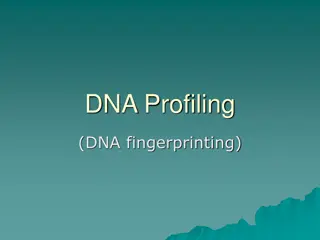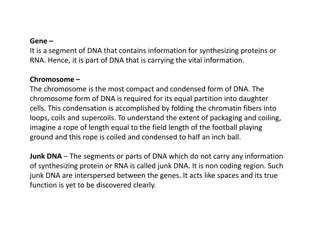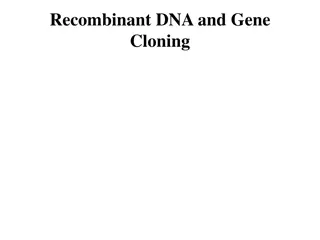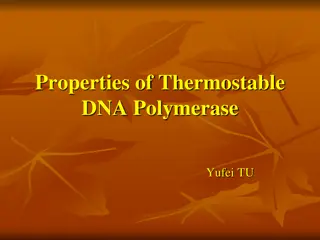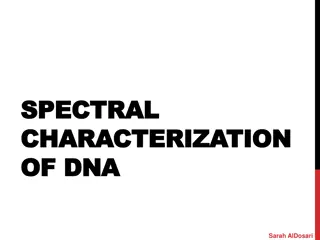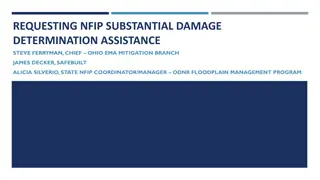DNA Damage Repair and Cancer Development
Cancer development and treatment in relation to DNA damage repair, mutations, and the roles of genes like BRCA1 and BRCA2. Explore how abnormalities in proliferation, energy efficiency, glycolysis, and immune response contribute to cancer. Understand the significance of mutations and their impact on cancer risk.
Download Presentation

Please find below an Image/Link to download the presentation.
The content on the website is provided AS IS for your information and personal use only. It may not be sold, licensed, or shared on other websites without obtaining consent from the author.If you encounter any issues during the download, it is possible that the publisher has removed the file from their server.
You are allowed to download the files provided on this website for personal or commercial use, subject to the condition that they are used lawfully. All files are the property of their respective owners.
The content on the website is provided AS IS for your information and personal use only. It may not be sold, licensed, or shared on other websites without obtaining consent from the author.
E N D
Presentation Transcript
DNA damage repair; good or bad for cancer development and treatment Katsunori Sugimoto nori.sugimoto@rutgers.edu
Cancer Abnormalities in Proliferation Contact inhibition Energy efficiency glycolysis but not on TCA cycle Immune response -------- accumulations of mutations in various genes
How cancer develops Accumulation of mutations
There is no single mutated gene that causes cancer. BRCA1 and BRCA2 Around 5% of cases of breast and ovarian cancers can be explained by the woman having inherited a faulty copy of BRCA1 and BRCA2 Explains 5% one of all breast cancers and 10% of ovarian cancers ? Their chance of developing these cancers is higher than average but unless further mutations occur over time in a number of other cancer protection genes in breast and/or ovarian cells, those cells will never become cancerous. 90 % --- non inherited A woman s lifetime risk of developing breast and/or ovarian cancer is greatly increased if she inherits a harmful mutation in BRCA1 or BRCA2. 10% women will develop breast cancer during life time 50% if BRCA1 or BRCA2 is mutated 1% women will develop ovarian cancer during life time 40 % if BRCA1 or 15% if BRCA2 is mutated Not 100 % There are many mutations which we do not know whether harmful or beneficial.
You may be luckier, men. If a man has inherited a faulty copy of the BRCA1 or BRCA2 gene, his risk for developing prostate cancer is increased. If a man has inherited a faulty copy of the BRCA2 gene (but not the BRCA1 gene) he has a slightly increased risk of developing breast cancer.
Roles of BRCA1 and BRCA2 in Homologous recombination BRCA1 ssDNA generation by several nuclease activities BRCA1 BRCA2 Rad51-covered ssDNA DNA polymerase
One major damage to activate checkpoint signaling is DNA double-strand break (DSB) , if not repaired efficiently. DNA double-strand break (DSB)
DSBs are recognized by the Mre11 complex. The Mre11 complex acts as 3 -5 exonuclease and makes cohesive ends. BRCA1 Mre11-Rad50-Nbs1 (MRN) Mre11-Rad50-Xrs2 (MRX) Exonulease ATPase, DNA binding, related to SMC proteins
Generating 3-ended ssDNA tail for homologous recombination MRX and Sae2 (CtIP) act at an early step, whereas Sgs1 (BLM) helicase, Dna2 nuclease and Exo1 exonuclease work later. CtIP Exo1 3 BRCA1 Dna2 BLM MRN
DNA ends after DSB induction are not always clean. Clean DNA ends DNA adducts or modifications Ku bound DNA ends
Generating 3-ended ssDNA tail at blocked DNA ends MRX and Sae2 (CtIP) act at an early step, whereas Sgs1 (BLM) helicase, Dna2 nuclease and Exo1 exonuclease work later. CtIP Mre11-Rad50-Nbs1
MRN and CTIP/Sae2 collaborate to induce a nick near the DNA end. MRN CtIP
MRN acts as a 3-5 nuclease and Exo1 degrades from 5 to 3 direction. Exo1 CtIP 5 3 MRN
Single stranded DNA is covered with RPA. Replication protein A (RPA)
Single stranded DNA is covered with RPA. BRCA2 Rad51 (RecA)
Single stranded DNA is covered with RPA. BRCA2 Rad51 (RecA)
5 3 5
5 3 5 DNA synthesis by DNA polymerase DNA synthesis by DNA polymerase Branch migration
Resolvase Mus81-Eme1 nuclease 5 3 5 DNA synthesis
DSBs are recognized by the Mre11 complex. The Mre11 complex acts as 3 -5 exonuclease and makes cohesive ends. Mre11-Rad50-Nbs1 (MRN) Mre11-Rad50-Xrs2 (MRX) Exonulease ATPase, DNA binding, related to SMC proteins
DSBs are recognized by the Ku complex. Ku caps DNA ends, inhibits DNA degradation and tether two ends
DSBs are repaired by Non homologous endojoining (NHEJ). MRN/MRX DNA ligase IV Non homologous endojoining (NHEJ)
Mismatch Repair MLH2, MSH2, MSH6, PMS2 Around 5% of cases of colon cancers can be explained ---- Lynch Syndrome (LS), hereditary nonpolyposis colorectal cancer (HNPCC) And other 5% one of the cancer protection genes that usually control cell division and growth ? 90 % --- non inherited The lifetime risk has been estimated to be from 44% in MLH1 mutation carriers to 71% in MSH2 mutation carriers. Lifetime risk in MSH6 mutation carriers in 113 families was estimated to be 26% at age 70 years and 44% at age 80 years. In PMS2 mutation carriers, the endometrial cancer risk at age 70 years has been reported to be 15%.
3 Mismatch Repair MutS2 MSH2-MSH6 --- recognition, MutL MLH1-PMS2 Nick induction
Chemotherapy Name Cychophoshamide Doxorubicin Intercalating agents Cisplatin Intercalating agents Oxaliplatin Bleomycin Generating free radicals Etoposide Inhibiting Topoisomerase II Action Alkylating agents Breast Lung Breast Lung Ovary Testis Stomach Bladder Colon Rectum Ovary Testis Ovary Testis Cancer Intercalating agents
processing (repair proteins) DNA damage DNA repair ATM and ATR protein kinases Tel1 and Mec1 in budding yeast ATM and ATR are mutated in ataxia-telangiecasia (A-T) and Seckel syndrome, respectively. Chk1 and Chk2 protein kinases Chk1 and Rad53 in budding yeast p53 Cell cycle arrest Transcriptional activation Apoptosis Checkpoint response
ATM interacts with the C-terminus of Nbs1. ATM ATM MRE11-RAD50-NBS1 (MRN) MRE11 is mutated in A-T like disorder, and NBS1 is mutated in Nijmegen breakage syndrome.
Mec1ATR forms a complex with Ddc2ATRIP. Mec1-Ddc2 localizes to sites of DNA damage by interacting with RPA. ATR ATRIP RPA RPA RPA
MDM2 FAS Bcl2-binding component 3 (Bbc3) Bcl6 CDKN1A (P21, Cip1) GADD45
Chemotherapy and irradiation induce DNA damage Chemotherapy -> DNA damage checkpoint activation and loss of essential genes cell death ------mutations in essential genes Cell death ------mutations in DNA repair genes irreparable cell death ------apoptosis cell death Chemotherapy -> DNA damage mutation Cancer development
http://www.pbs.org/kenburns/cancer- emperor-of-all-maladies/watch-video/ http://www.cancer.gov
